Peperomy is an ideal indoor plant that develops perfectly, blooms and multiplies in captivity. In home floriculture, about 30 types of peperomy of thousands of famous are successfully grown. But they value her by no means for the splendor of flowers, but for the high decorativeness of bright and elastic greens.
Content
Peperomy flower,description
- Peperomy is a grassy perennial pepper.
- The birthplace of peperomy is the distant South America. There, in subtropical forests, some species exist as epiphytes - plants growing on other species, mainly on trees or rotting trunks. But peperomy is not a parasite, it only uses neighboring plants as a support, and uses photosynthesis to power and get energy. Others grow like terrestrial plants that live in forests.
- The plant prefers peat soils, is often found under the canopy of the forest, less often on the rocks.
- In the natural habitat, peperomy can be an annual and perennial, and at home it is grown exclusively as a long -term species.
- The height of the aboveground part of the flower does not exceed 50 cm. The root system is poorly developed, located in the upper ball soil.
- Peperomy leavesfleshy, with wax or glossy coating, thickened or flat. Their color is diverse-bright green, crimson, golden, colorful with stains or striped. The shape of the foliage is also different - oval, with Zazubins, corrugated, round, heart -shaped, leathery. The surface of the sheet can be smooth or pubescent.
- U peperomy Floweringmodest and short. The blooming period of pale yellow flowers is spring-summer in the dependence of the variety.
- Several high peduncles with inflorescences-collars proudly rise above the foliage. Peperomy flowers are very small, unsightly, collected in cylindrical inflorescences that resemble cobs. After flowering, the inflorescence is covered with small grains that fly around at the slightest touch.

Types of peperomy p photo
Depending on the type of peperomy, it is ampelous, erect and bush. Each of these groups includes many varieties.
Types of peperomy erect:
- Golden - is distinguished by a magnificent color of greenery. On a fleshy-green leaf canvas with a glossy shine, golden strokes are gracefully.

- Closelit - in the species dense stalks, proudly directed up. Matte foliage, dark green color with milk periphery and purple edging.
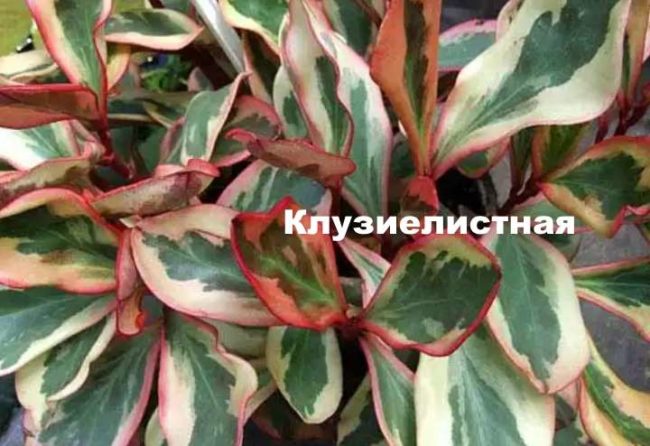
- Magnolibuity - a view with branching shoots and rather large leaves with a wax coating and a rounded end. The basic color of the leaves is green, it is complemented by a yellow rim.

- Toolite is an interesting view with oval glossy leaves. Their value is 8-12 cm in length, the color is different-saturated green, milky green, golden green with a cream border.

Peperomy ampella, types:
- Closing-is distinguished by fragile stalks of a green-pink shade. The length of oval leaves does not exceed 5 cm. This peperomy, if there is a support, grows like a liana or gracefully hangs down from the suspended pot.
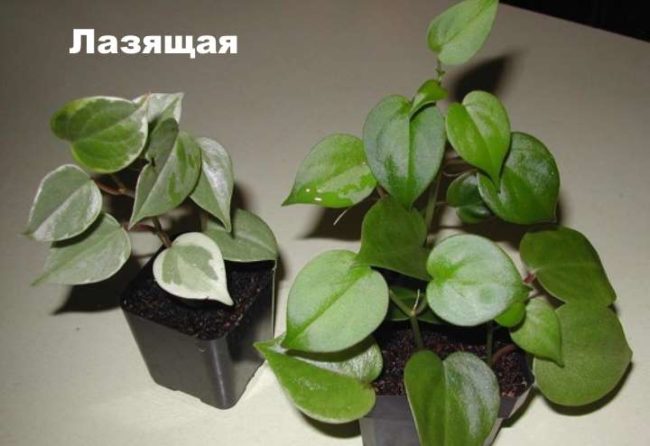
- Clare - small leaves up to 1 cm long cover the reddish stems. The color of the greens is simply inimitable - the greens with chic silver, diluted with bronze spots, are full of eyes.

Bush peperomy:
- Passate Lilian-Instead of the erect inflorescence, the peperomy of the inflorescence, which ends with a sharply expanding bell, which resembles a lily flower. The foliage is powerful, dark green from the outside, and bright-bagic with the wrong side.

- Rosso-reluctantly blooms, but affects the gaze with spectacular leaves: the dark green top contrasts with the rich-red bottom of the sheet.

- The wrinkled - a stunted look up to 15 cm high. Lancetoid leaves are sitting on weak petioles. This peperomy floweringit produces peduncles with delicate inflorescences resembling spikelets.
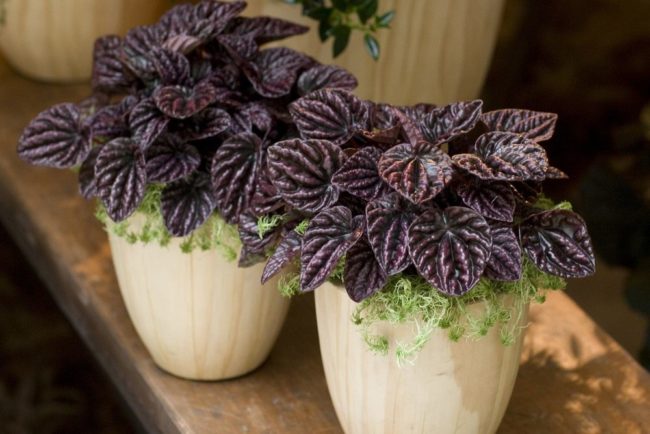
Some types of peperomy are conditionally attributed to succulents. They have juicy leaves that can intensively absorb moisture as all succulents. These types include:
- Gravelens - bizarre coloring of fleshy leaves determines the exceptional beauty of the plant. The top of the canvas is light green, the bottom is ruby. The foliage is arched, turned to the barrel of a rich-bearded color. The bush is small up to 25 cm up, grows slowly, so it is used in decorative compositions. The flowering is inconspicuous-the spikelets of the straw color sit on red-brown peduncles. Outwardly, the view resembles sea corals.
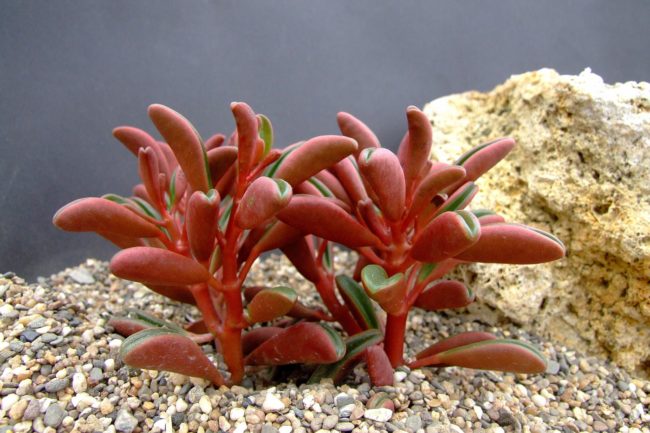
- Ferreira is a bright epiphytic souvenue with juicy green foliage up to 8 cm in length. The sheet is elastic and rather thick, darker at the base. At home, it practically does not bloom.
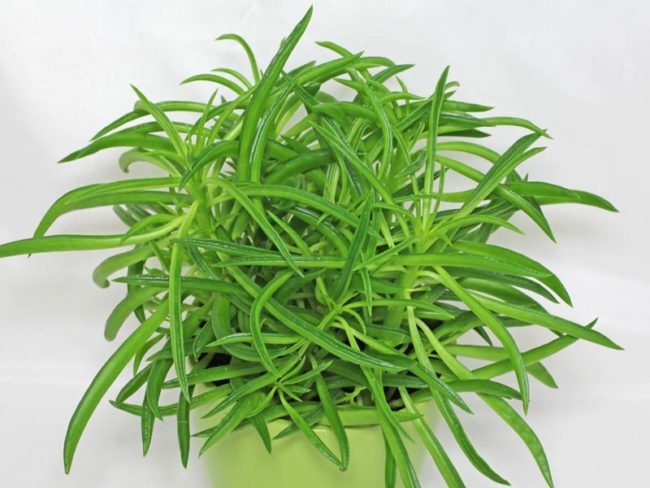
- Columella is a plant with interesting leaves: they are a bright emerald color, they sit densely on a stalk and resemble a dragon scales. The plant looks gorgeous when planted in groups.

Peperomy, care
Peperomy will require you a lot of care. She needs to maintain a stable temperature in the room, balanced watering and sufficient lighting.
Peperomy, lighting and temperature
Proper care for peperomy at homeit begins with the choice of a suitable place:
- The flower should be in good lighting, but there should not be direct sunlight, otherwise the leaves will be covered with burns and lose their decorative appearance.
- Avoid shading without additional artificial lighting. In the shade, the plant will begin to produce long shoots with small pale leaves. Such growing conditions for variegated forms are especially dangerous - a beautiful pattern will completely disappear.
- Peperomy can do without winter peace, so it is advisable to maintain the temperature at the same level year -round. The optimum temperature is +20 ... +22 ° C. In winter, a boundary temperature decrease to +16 ° C is allowed, and if it is colder, then the flower will die. In the summer, it is better to take a pot with peperomy into the garden and place in the shade of trees, where it will be comfortable.
- It is important to exclude drafts, regardless of where the flower is - in the house, on the balcony or in the garden. Gusts of wind provoke a drop in the deciduous cover.
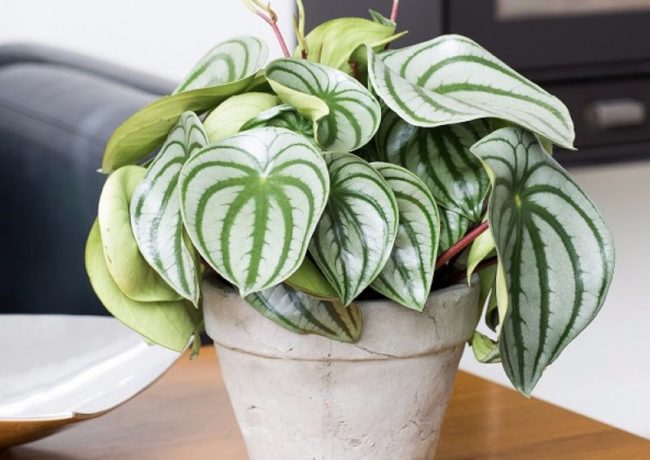
Peperomy, watering and humidity
- During the period of active vegetation peperomy is roomit needs sufficient watering using soft and slightly warm water. After watering, the remaining water must be drained from the pallet, otherwise the roots will destroy the fungus.
- From mid -autumn to the end of winter, the plant is watered with an imminent - not more than twice a month. The soil should not completely dry out, but there should not be stagnation of moisture.
- Peperomy loves the average level of humidity, so in too dry weather (only in summer) it is necessary to spray it a little, but without excesses - increased humidity can harm the flower and it rot.

Fertilizer of peperomy
Peperomy is fed with any complex fertilizer for indoor plants. Root top dressing is carried out every two weeks from spring to autumn. In winter, it is enough to fertilize the flower once a month.
Advice! In order for peperomy to actively branch, they regularly pinch the apical shoots.

Planting peperomy
Planting work should be carried out in the spring. For this period, the peak of plant development is accounted for. The pot is better to choose a small, flat, made of natural material. In a too spacious pot, a flower can lose decorativeness or get sick.
Soil requirements
For peperomy, you need to purchase loose and light soil. It is quite possible to fit a mixture for cacti and succulent. But you can cook the soil yourself, taking one part of the steamed garden humus, peat, river sand and leafy earth. Also, a little small expanded clay or perlite, a handful of crushed coal and the same amount of zeolite must be added to the prepared mixture.

Features of planting peperomy
- They transplant young peperomy annually. The pot is always taken only 1 cm more. An adult plant is transplanted every three years.
- In the process of planting, pay special attention to the drainage. Although the peperomy of the rhizome is poorly developed and small, the drainage should be sufficient and occupy 1/3 of the volume of the pot. You can use expanded clay, red brick.
- Also provide holes in the bottom for outflow of water and air.
- They deepen the roots quite a bit and sprinkle with the soil. The base of the stalk should only penetrate the soil a little, and to a greater extent rise above it.
- At the end, warm watering of the plants is carried out.
- The ampelous and climbing types of peperomy need to provide low support.
- Peperomy responds well to the addition of Kamushkov ball to the flowerpot. They hold moisture in the soil, and also help the root system to stay in the upper ball of the soil and not to expose under the weight of the aboveground part. In addition, pebbles serve as an excellent decorative element.
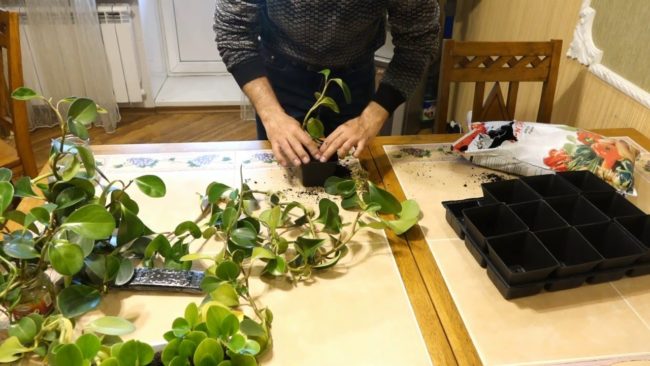
Peperomy, reproduction
The plant willingly multiply in indoor conditions. Without any difficulties, you can grow peperomy from a cuttings or seed, or simply separate part of the rhizome that will quickly root.
Propagation of peperomy with cuttings
- In the spring-summer season, cuttings with two buds are cut off with a disinfected knife. It can be either the apical or lateral stalk.
- Further, the processes are immediately immersed in a loose substrate and build a kid.
- A pot with a cuttings is held in a warm room, the kid is periodically ventilated, and the soil is slightly moistened.
- In such conditions, a sprout is kept until the root system will grow to about 4 cm in diameter. After that, the young bush is transplanted into a larger pot.
You can also root a sheet of peperomy:
- Cut off a healthy sheet and immerse it in a container with defended water.
- Water is updated daily, but not completely drained, but only add part of a new portion.
- When a spine appears 4 cm long, the plant is planted in a nutrient substrate.
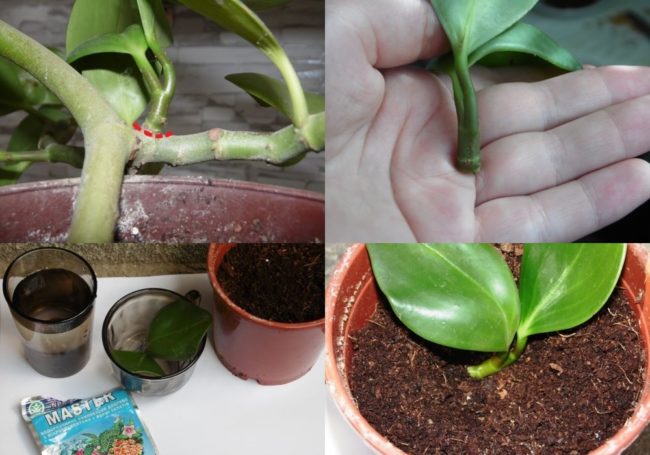
Peperomy from seeds
- In early spring, in March, the seeds are soaked in warm water for an hour.
- Mix peat with coal and seeds in this mixture of seeds, cultivating them by 1 cm deep.
- The soil is moisturized and covered with a polyethylene pot.
- The sprouts reach 8-10 cm after about 1.5 months.
- After that, they can be transplanted into separate pots or create group plantings.

Propagation of peperomy by dividing the rhizome
This is the most elementary method of reproduction of the flower:
- An adult plant without signs of the disease is removed from the pot.
- With the help of a knife, part of the rhizome is cut off along with the aboveground part.
- A conventional landing in a nutrient substrate is carried out.
Peperomy of the diseaseand pests
If peperomy is careful for peperomy, it rarely suffers. But sometimes troubles happen, and the flower gets sick.
- The root rot occurs as a result of the soil waterlogging. Fragile roots quickly rot and the plant dies. If you notice the signs of the disease in time, you can have time to root the cuttings and preserve peperomy.
- The dwarf virus completely destroys the flower. Shoots stop their growth, bend, there is no flowering. It is not possible to cure the plant.
- Most often, peperomy is striking in pests - spider mites, thrips, shields. They affect the leaves, and without treatment completely deplete the plant. To destroy them, it is necessary to use system insecticides - Aktar, Aktellik.

Problems of growing peperomy
Sometimes the plant just dulls before our eyes, but it is not possible to find out the cause. Consider the most spread of the problem:
- Convex spots on the foliage - a consequence of constant waterlogging of soil or lack of necessary drainage. At first, water blisters are formed, which over time acquire a brown color. If you are inactive, the plant dies from the development of rot. To eliminate the problem, it is necessary to transplant a flower with the implementation of all the rules into suitable soil.
- Systematic yellowing of foliage with the subsequent appearance of brown crusts is the result of sunburn. Most likely, a flower pot is located on a too light windowsill with direct sunlight. To improve the condition of the flower, you need to move to partial shade and cut off the burned leaves.
- The appearance of a brown color along the edge of the sheet - the flower was probably hypothermia. Long stay at temperatures below +12 ° C leads to its death. It is necessary to gradually increase the air temperature to the mark comfortable for peperomy - +22 ° C. If the process has not gone too far, peperomy will freeze.
- The leaves are blackened and fall - the room is too wet. If a white plaque also appeared on the affected leaves, then a fungal infection has already developed. It is extremely difficult to save the plant, so it is better to try to root a healthy sheet or stalk.

Peperomy plant- A wonderful indoor companion, which, in addition to tropical beauty, brings positive energy and a great mood to the house. In response to its usefulness and goodwill, peperomy will require you very little care and attention.
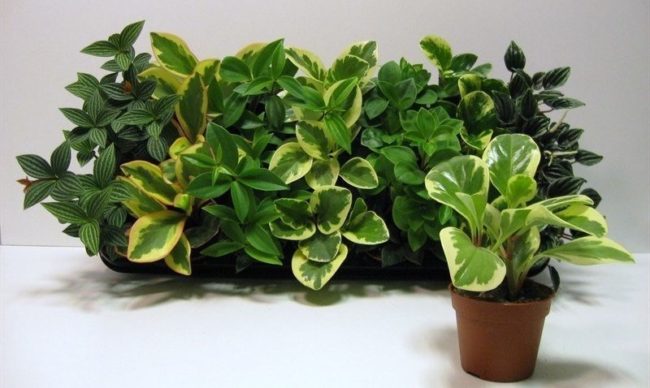

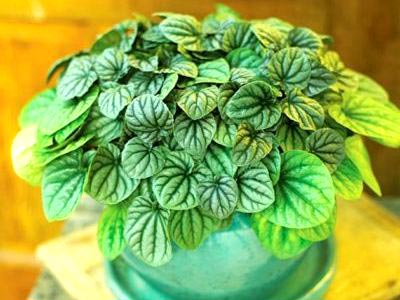









Comments
a couple of years ago, there was no side of metrogils from the same problem, there were no side effects ...
I’m not a fan of peeling at all, it saves from acne of metrogil, it also smoothes it ...
Great article! ...
I take the second course of the Capsules Climafite 911. The tides went very quickly. It became calmer, irritability went away and I sleep well ...
i also noticed - it is worth nervous, everything immediately affects the face. Therefore, I try to avoid conflicts and unpleasant people. Of the creams, I like Miaflow from wrinkles - smoothes not only small wrinkles ...